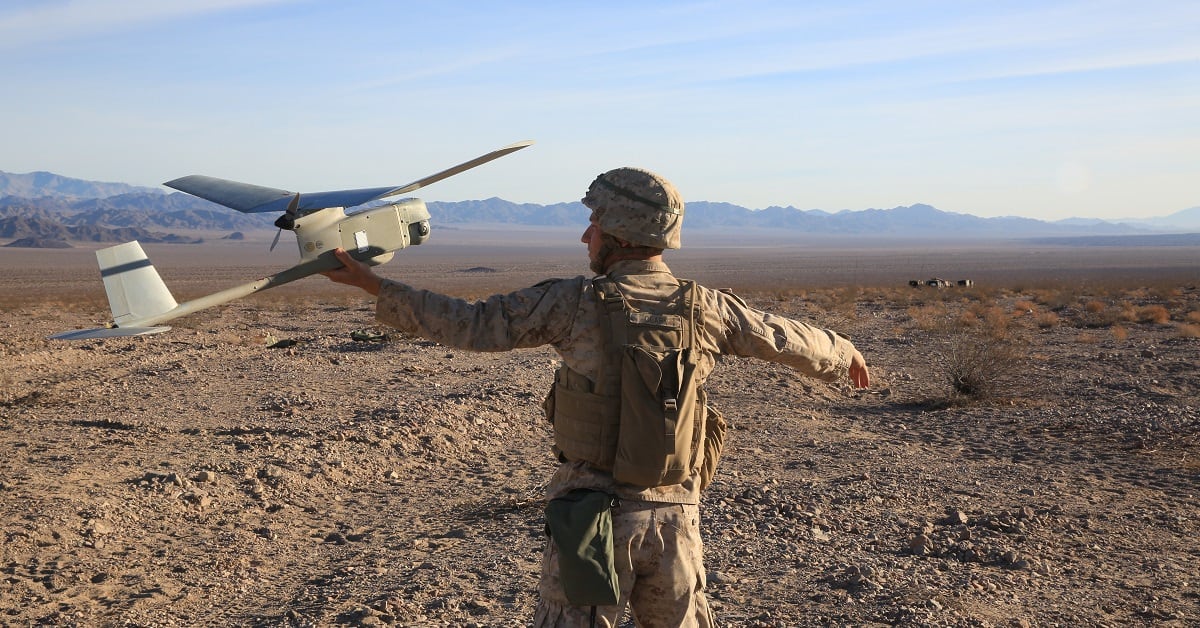Deeply built into the Marine Corps’ plan for its own future are loitering munitions: unmanned systems, also called “kamikaze” or “suicide” drones.
These drones can remain airborne until a target is identified ― at which point they set a course for that target and go out in a blaze of glory.
While substantial funding for acquisition and development of these systems is already built into 2023 budget plans, the assistant commandant of the Marine Corps said the service is already making plans to ask for even more.
“So, would I seek more munitions?” Gen. Eric Smith told an audience at the Center for Strategic and International Studies in July. “Yes … the ‘23 budget just went across, and the ‘24 budget is working through the department right now.”
RELATED

Building loitering munitions into newly reorganized Marine Corps infantry battalions has been part of service strategy since 2021, when Commandant Gen. David Berger published his annual Force Design 2030 update.
In that update he referred to the success of the weapons systems in the Second Nagorno-Karabakh War, a 2020 conflict waged heavily with drones and long-range artillery in which Azerbaijan prevailed over breakaway state Artsakh and Armenia.
The Russia-Ukraine war has intensified focus on loitering munitions.
The U.S. has sent Ukraine hundreds of Aexev Phoenix Ghost and Aerovironment Switchblade tactical unmanned aircraft systems to counter Russia’s own systems, like the Lancet.
Like much in that conflict, it’s not fully clear yet what the impact of these systems has been. But those familiar with the systems say they bring to the battlespace both an inexpensive missile capability and the psychological element of fear and uncertainty: You never know when you’re being tracked by an eye in the sky that’s just waiting for the signal to strike.
Smith said the presence of loitering munitions in that fight and future ones was changing how all parties had to act.
“The ability of those drones to be nearly ubiquitous across the battlefield, because they’re so inexpensive, you have to contend with that,” he said. “And you have to drop your signature. If you’re seen, either because you radiate, or because you’re physically seen, you’re targeted almost immediately.”
Smith mentioned two specific developmental loitering munitions capabilities the Marine Corps is testing out: organic precision fires-mounted, or OPF-M, and organic precision fires-infantry, or OPF-I.
In 2021, the service awarded Bethesda, Maryland, based Mistral Inc. a contract as part of a deal valued up to $44 million to design, build and test OPF-M in partnership with UVision LTD and integrate a launcher into three land and sea platforms: the joint light tactical vehicle, the light armored vehicle-mortar and the still-in-development long-range unmanned surface vessel.
In his speech, Smith revealed the outcome of an OPF-M live-fire test that he said took place in 2021.
“We struck five for five moving targets, that means armor killers, at ranges in excess of 80 kilometers,” Smith said. “So, test done. Now it’s about, how much can we procure using the budget we have, because we have to balance the Marine Air-Ground Task Force.”
Requested in the 2023 defense budget is funding to continue building out loitering munition capabilities.
Inside the nearly $12 million allocated for the Futures Directorate are resources for experimentation with an advanced, “fully autonomous, remotely operated” loitering munition unmanned aircraft system that can seek and engage targets by day or night. Plans for 2023 include an “unmanned kill-chain” demo using small unmanned aircraft systems to further prove this concept.
For organic precision fires-mounted, 2023 will see the completion of integration and testing for a JLTV variant and groundwork laid for testing with 122 mm munitions, according to Marine Corps and Navy budget materials.
The year 2023 will also be the launch of the man-portable version of the system, to be known as OPF-Light.
The Marine Corps has yet to pick a maker for OPF-Light, described in a 2020 contract solicitation as a man-portable system with at least 90 minutes of endurance, a munition range of up to 20 kms and the ability to swarm with other systems.
The 2023 budget request includes $7.5 million to conduct market analysis, plan vendor demos and begin integration of a miniaturized command-and-control system, scaled, like the system itself, to fit into a backpack for easy transport.
Beginning in fiscal 2024, budget documents note, the Marine Corps will start developing additional munitions capabilities.
Notably absent from the funding list is a multiyear research effort that the Marine Corps appears to have quietly concluded: the low-cost UAV swarming technology, or LOCUST, designed to launch both intelligence, surveillance and reconnaissance drones and loitering munitions “from air, surface, ground, and sub-surface platforms to conduct both singular and swarm operations across battlespace.”
While the Navy and Marine Corps released some impressive demo footage of the concept in 2016 and 2017, development of the program appears to wrap up in 2022, with $8 million in research funding.
No research dollars are allocated for 2023, and no acquisition strategy is outlined.





